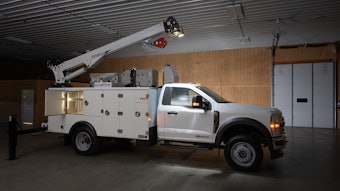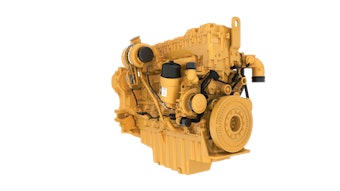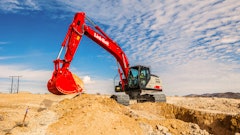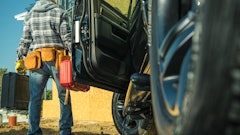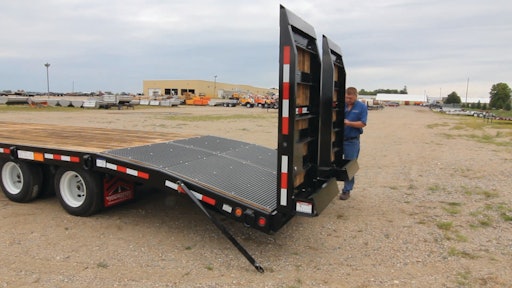
Which would you rather do, spend your weekends fishing, golfing or in a back brace laying on the couch?
When hauling equipment is part of your daily job, loading and unloading procedures can become routine. Sometimes daily routines can lead to languid actions that can cause otherwise preventable injuries. Trailer ramps seem straightforward, but not paying attention can cause back injuries or worse.
While some trailer ramps are made out of lighter materials such as aluminum, most are built out of steel and lifting one of these ramps improperly can cause injuries should one slip out of your hands.
There are several ramp types available on trailers. Most are manually operated, but some are air or hydraulically operated. All of them can cause an injury if you aren’t paying attention.
Manual-operated ramps
The most popular ramp type is manually operated. When transporting, they are either rested on the back of the trailer, stored upright, or stored in a holder. It is much safer for two people to lift the ramp together rather than one person attempting to lift it alone. Position yourself on the side of the ramp and remember to always lift with your legs and keep your back straight. Don’t let the ramp fall to the ground; gently set it down. A lot of trailer manufacturers add springs to assist the ramp to the ground or off the ground, and some add springs for both directions.
Avoid standing directly behind the ramp and make sure that area is clear of persons or objects.
If the ramps are stored someplace on the trailer rather than connected to the trailer, make sure there are two people lifting out the ramps and placing them onto the trailer. Watch so that your feet are not below the ramp in case it slips and falls.
Mechanically operated ramps
Ramps that are mechanically operated with air or hydraulics will alleviate back injuries, but come at a higher cost. Normally ramps that are extremely heavy are mechanically operated. These can come with their own safety hazards and operating them safely is as important as manually operated ramps.
These ramps are raised and lowered by either an air bag system, air cylinders, or hydraulic cylinders. It’s vitally important to make sure the air or hydraulic system is working properly and does not leak.
It's also important to stand clear of the ramps while removing the ramp hold-up bars. Walk well around the area where the ramp could fall when removing the hold-up bar from each ramp.
Always remember to secure the ramps when they are in transport position.
Smart safety
Operating ramps might seem straightforward, and it really is, but injuries can happen if you aren’t paying attention. Stay focused on proper lifting and standing clear of the ramp and you can avoid a trip to the chiropractor or doctor’s office. Wouldn’t you rather be fishing?

